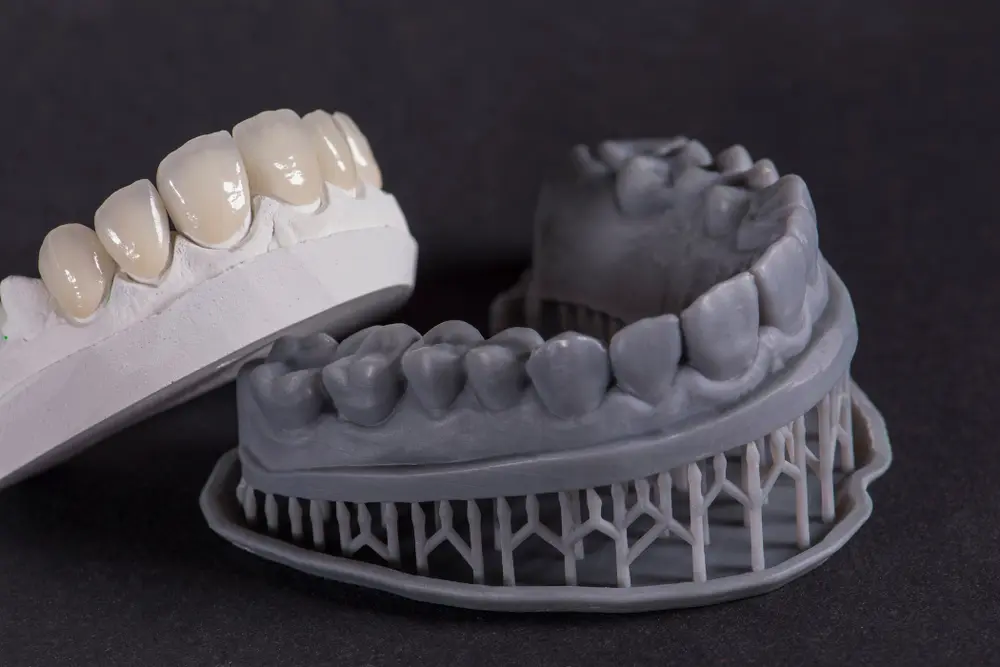3D Printed Teeth: How Dentists Are Customizing Perfect Dental Crowns & Implants (2025)

Can 3D Printers Create Custom Teeth for Patients? The Future of Dental Prosthetics
The dental industry is undergoing a revolutionary transformation with the advent of 3D printing technology. Gone are the days of messy molds and weeks of waiting for dental prosthetics. Today, dentists and dental labs can design, customize, and 3D print precise dental crowns, bridges, dentures, and even implants in a matter of hours. But can 3D printers truly create natural-looking, fully functional teeth for patients? And is this the future of restorative dentistry?
As a dental technology expert, I’ll break down the process, benefits, and future implications of 3D-printed teeth—backed by clinical research and real-world applications.
How 3D Printing is Used to Create Dental Teeth
1. Digital Scanning & Modeling
Traditional dental impressions using putty are being replaced by intraoral scanners that capture a precise 3D model of a patient’s teeth in minutes. This digital file is then imported into CAD (Computer-Aided Design) software, where a dental technician or dentist designs the prosthetic tooth (crown, bridge, or denture) with exact specifications.
2. Material Selection
3D-printed teeth require biocompatible, durable materials that mimic natural tooth structure. The most commonly used materials include:
-
Resins (for temporary crowns & dentures) – Fast-printing, cost-effective, but less durable.
-
Ceramics (for permanent crowns & bridges) – Highly aesthetic, strong, and long-lasting.
-
Metal alloys (for implants & frameworks) – Titanium or cobalt-chrome for high-strength applications.
3. The 3D Printing Process
Depending on the material and application, different 3D printing technologies are used:
-
Stereolithography (SLA) & Digital Light Processing (DLP) – Ideal for high-detail resin-based dental models and temporary prosthetics.
-
Selective Laser Sintering (SLS) / Direct Metal Laser Sintering (DMLS) – Used for metal frameworks and implants.
-
Binder Jetting (for ceramic crowns) – Enables full-color, natural-looking dental restorations.
Once printed, the prosthetic undergoes post-processing—polishing, staining (for aesthetics), and sintering (for ceramics/metal) to achieve final strength.
4. Fitting & Adjustments
The dentist checks the fit, bite alignment, and aesthetics before permanently cementing the prosthetic. Adjustments can be made digitally and reprinted if necessary.
Is 3D-Printed Teeth the Future of Dentistry?
Advantages Over Traditional Methods
-
Faster Production – From days/weeks to just hours.
-
Precision & Customization – Perfect fit with digital accuracy.
-
Cost-Effective – Reduces lab fees and manual labor.
-
Minimally Invasive – Less drilling and better preservation of natural teeth.
Current Limitations
-
Material Strength – While resins and ceramics are improving, they may not yet match the longevity of traditional PFM (porcelain-fused-to-metal) crowns.
-
Regulatory Hurdles – Not all 3D-printed dental materials are FDA-approved for permanent use.
-
High Initial Costs – Dental practices must invest in scanners, software, and printers.
The Future: Bioprinting & Regenerative Dentistry
Researchers are exploring 3D bioprinting of living cells to create bioengineered teeth that could integrate with natural gum and bone. While still in experimental stages, this could eliminate the need for artificial prosthetics altogether.
Final Verdict: A Game-Changer in Modern Dentistry
Yes, 3D printers can already create highly accurate, functional, and aesthetic dental teeth for patients—and the technology is only getting better. While traditional methods won’t disappear overnight, 3D printing is undeniably the future of prosthodontics, offering unprecedented speed, customization, and efficiency.
For patients, this means faster treatments, better-fitting restorations, and potentially lower costs. For dentists, it’s a more streamlined, digital workflow with fewer errors.
The era of 3D-printed teeth isn’t coming—it’s already here.




